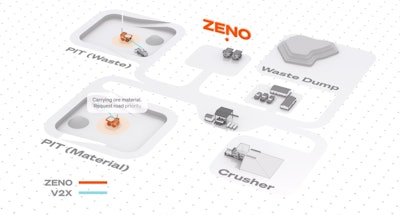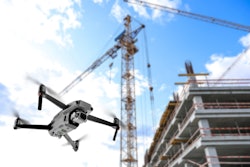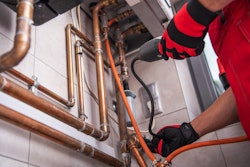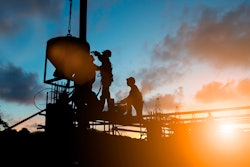
Autonomous vehicles (AVs) are a buzzy topic of conversation these days. Most of that buzz right now is happening on-road, as self-driving car companies make headline news for expanding their pilot programs or tinkering with full self-driving technology. But while the Waymos, Teslas and Zooxes of the world soak up the mainstream attention, another, more pressing, application for these technologies is on the rise: heavy industry.
Autonomy has been a reality of heavy industry for over 20 years—a surprising fact to most. It’s possible this fact isn’t as widely known because foundational industries like construction and mining tend to fly under the radar, or perhaps because earlier iterations of autonomy weren’t accessible or powerful enough to take hold in a meaningful, widespread way.
That’s all changing now. Fueled by better artificial intelligence (AI) technology, specifically deep neural networks, competitive pressure, market maturity, and labor shortages, this technology is spreading rapidly across heavy industry. From surveying drones, to autonomous heavy equipment, to drywalling robots, this technology is popping up in all corners of the industry. But even as heavy industry provides us with a model for the first application of autonomy at scale, it still has one thing to learn from on-road applications: the importance of electrification.
Most of the major on-road autonomy players—Tesla, Zoox, Waymo, Cruise, etc.—have built or plan to build vehicles that aren’t just self-driving, but electric. They’re tackling questions of safety, efficiency, cost-effectiveness and sustainability in one fell swoop, by creating autonomous and electric vehicles. It’s time for off-road industries like construction to do the same.
Better Together: Why Electrification And Autonomy Go Hand In Hand
At face value, autonomy and electrification may seem like independent technologies. And they can (and do) stand alone; both have been progressing and operating independently, but in parallel, over the last decade. But today, we’ve advanced to a point where the benefits of both technologies can now be married together to create an even more enhanced solution.
Construction today faces a number of challenges. The sites are dangerous; in fact, nearly half of the United States’ deadliest jobs are in construction. The industry faces bad, and worsening, labor shortages—which drive up costs and can impact productivity up to 40%. The sector is also one of the worst greenhouse gas producers. Independently, autonomy and electrification can put a dent in these challenges, but together, they can address them all and pave the way toward more modern, safe and cost-effective sites.
Roadblocks To Deployment: Why Electrification And Autonomy Aren’t Ubiquitous Yet
So why, if these technologies together hold real promise to reimagine industries like construction, have they not been rolled out industry-wide? There are a handful of reasons that we haven’t historically seen this technology take hold.
First, deploying autonomous and electric vehicles, whether separately or together, is no simple feat. If a company wants to start fresh with brand new equipment, the upfront cost is steep—and prohibitive, to many companies. But even if a company wants to retrofit its existing equipment, enabling it to optimize its current fleet, it’s highly complex to transform a vehicle that’s anywhere from 25 to 200 tons (at least at first). It requires time and investment to understand how the machine worked previously, and how it can be improved through autonomous hardware and software and a new battery that powers operations instead of its internal combustion engine.
And, until recently, there was no real urgency to make this leap. The barriers were high—cost, time and complexity—and the payoff was uncertain. Before early adopters, competitive pressure and net-zero commitments combined to create a pressure cooker for this technology, companies could comfortably stick to the status quo. That era of complacence is quickly coming to an end, replaced by a new status quo.
Digging In: How Autonomy And Electrification Are Now Taking Hold
In recent years, we’ve started to see an uptick in interest in combining electrification and autonomy to modernize construction. In fact, my company, SafeAI, just recently began working with Siemens to design an electric, autonomous fleet for a construction company, Obayashi. And we’re not alone. A number of factors have combined to make industries like construction put the pedal to the medal on deploying these technologies. So why now?
First, it’s a more enticing proposition than it was ten years ago. Early adopters have taken the leap on autonomy and, to a lesser extent, electrification, and demonstrated some of the benefits that companies can expect. What’s more, we’ve seen significant market maturity in recent years. This has been fueled largely by the deluge of investment into these technologies on-road; conservatively, $80 billion has been poured into autonomous vehicles (with the actual total likely to be much higher), with hundreds of billions already going or expected to go towards EVs. This has resulted in more affordable, and therefore more accessible, technologies. The average cost of an EV battery, for example, has dropped by 80% in the last ten years.
This maturity coincides with increased incentivization to adopt these technologies. Government entities, ESG initiatives and end customers (as well as competitive and labor pressures) are increasingly motivating companies to utilize autonomous and electric vehicles to make operations both more efficient and more sustainable.
Take Japan as an example. Japan has one of the world’s largest construction markets—but it also has plans to be net-zero by 2050. This environmental commitment is currently at odds with a booming construction industry that, as-is, contributes significantly to global greenhouse gas emissions. Electrification offers a path to do both, fueling economic progress without putting a dent in sustainability efforts. Or, consider that only about 25% of the infrastructure we’ll need by 2050 currently exists today. At current production rates, our global construction rate may be unable to keep pace. Autonomy can give this a boost by enabling constant 24/7 operations to kickstart infrastructure construction.
Building Better: The Benefits Construction Companies Can Expect From These Twin Technologies
As AVs and EVs continue to gain traction in heavy industry, construction companies can expect to see a number of benefits from deploying the two together.
First and foremost, together the duo goes a long way toward safeguarding a historically-dangerous industry. Construction sites pose the obvious and immediate risks to worker safety, but there are also long term factors, like the potential impact of working in dusty conditions. With autonomous and electric equipment, employees can remove themselves from the fray and plan from a safe distance—without entering to operate or refuel the vehicles.
Autonomous and electric vehicles can also improve productivity and cost-effectiveness. Autonomy enables 24/7 operations, and electric vehicles encounter fewer maintenance issues, which eliminates costly and unwanted downtime. In total, electric equipment is up to 40 - 60% less expensive to operate compared to traditional equipment, while 24/7 operations enable companies to make the most of their assets.
The market trends and the pressure we’re seeing are not a flash in the pan; they’re here to stay. It’s time for off-road autonomy to take a leaf out of on-road’s book and put electrification front and center to create job sites that are not just more productive and safer, but also more sustainable.

















